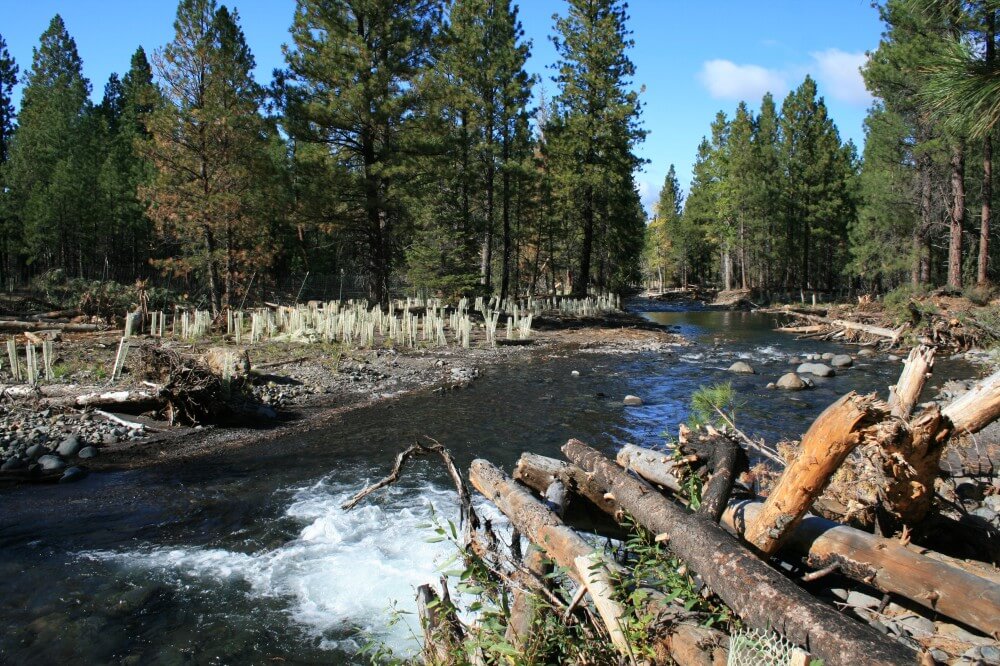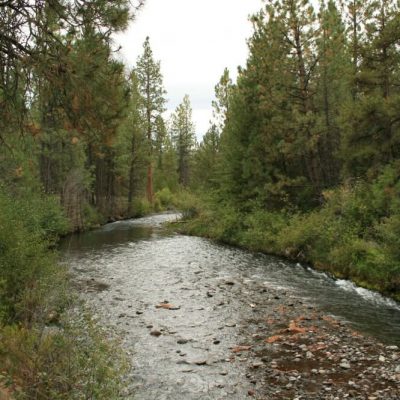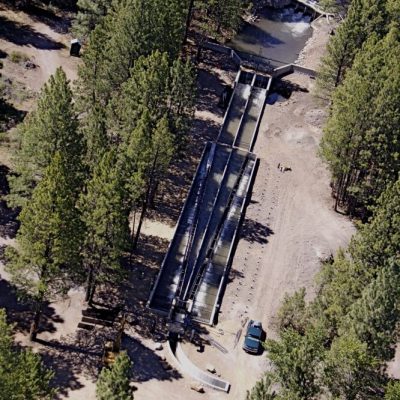







This diversion is a secondary diversion and only supplies water when flows are high enough to divert (typically just a few months out of the year). It was failing due to a passive vertical screen that was out of compliance and could not handle high levels of debris edit.
Since the installation of the Farmers Screen, Three Sisters Irrigation District has become a model of irrigation modernization and fish protection in the Deschutes River basin.
Three Sisters Irrigation District (TSID) diverts up to 160 CFS from Whychus Creek, a tributary to the Deschutes River. TSID has historically diverted water using a stream-spanning, low-head dam and did not have a fish screen in place. The diversion is located on US Forest Service land in the National Forest where a re-introduction of summer Steelhead is occurring.
The dual-design custom Farmers Screen allows for a range of diverted flows from 30 – 160 cfs while still meeting NMFS criteria. This Farmers Screen also has a built-in sediment management system which allows continuous flushing of sediment from under the screen during high sediment times of the year.
The screened water leaves the structure and enters two pipelines that carry it to a reservoir for delivery to farmers and ranchers. By-pass flow carries fish and debris back to Whychus Creek through a pipeline.

